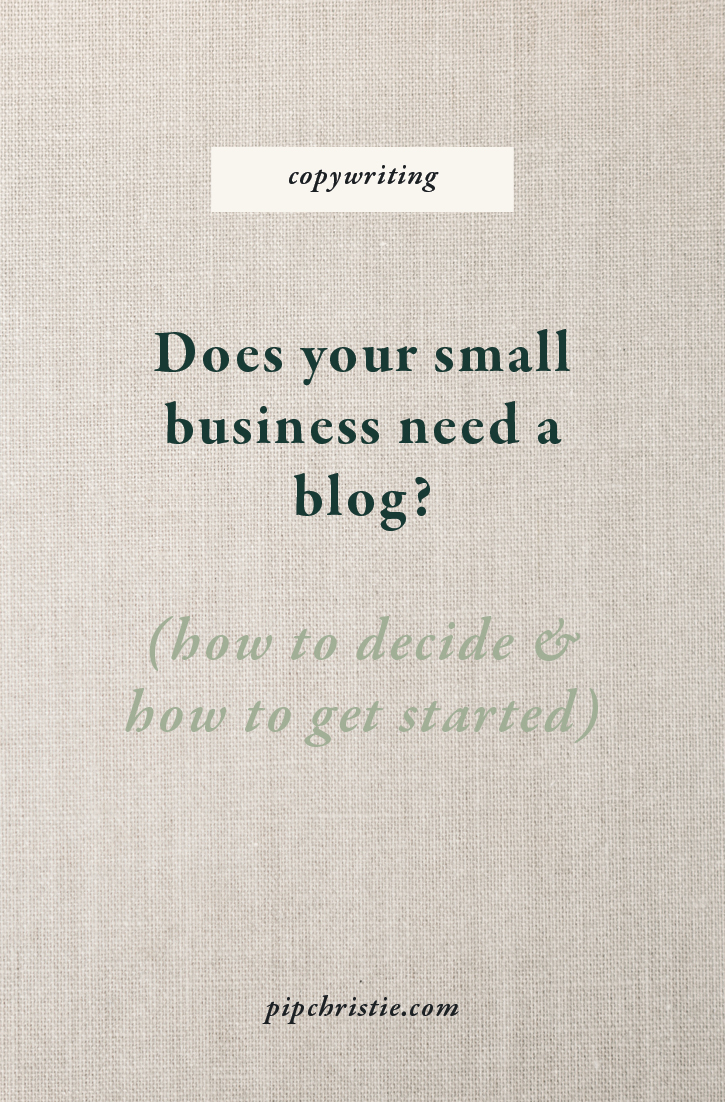8 ingredients of a successful blog post
Blogging is the tool that starts the conversation between your business and your potential customers. It can set the tone and show what you’re about, without a single sales pitch in sight. It’s the start of the soft-sell and, I believe, it’s one of the most powerful tools in your marketing box.
As readers of my weekly newsletter this month know, I’m a huge advocate of the value of blogging for small business owners. Running a blog for your business is a low-cost way to extend the arm of service to your audience and make yourself even more memorable in a busy marketplace. In fact, if you DIY your blog posts then blogging can essentially be free! Here’s your ultimate checklist for a successful blog post.

1. A Valuable and Unique Topic
Selecting a valuable topic for your blog post is undoubtedly the most important ingredient on this list. Even the most well written blog post is going to fall flat if the topic is not of value to its target audience.
Your blog post needs to be speaking to your audience and your ideal customers. It needs to be serving them and adding some form of value to their lives. This is why I always say that content should either educate, inspire or entertain its readers. For, if it does one of these three things, then it is adding value. Your blog posts don’t always need to be offering a complex solution to a drastic problem. Rather, they simply need to be creating a moment in your reader’s day.
It’s for this reason that I disagree with those popular toolkits you’ll see on Pinterest, offering you ‘50 blog titles to get you started’. Your blog posts are going to be totally unique to you because nobody else has an audience quite like yours.
2. An Enticing Headline
Your blog post’s headline is your invitation to your readers. This is how you are showcasing the value your audience will gain by reading your post.
A good headline must be clear and straight to the point. Your audience should be able to determine what your blog post is about by just a simple glance at its header. This is how they will decide whether they click through or carry on scrolling.
This doesn’t mean you should fall into the tempting trap of click-bait however. Your headline must be accurate and offer a true representation of what can be found in the post. After all, if it doesn’t match expectations, readers will click that ‘x’ button and head elsewhere.
3. Engaging Imagery
They say a picture paints a thousand words and, well, they’re right. The images or graphics you choose to include in your blog post should support the message of your piece.
Images can help to drive a point home as you show your message coming to life, whilst graphics can help to illustrate a complex point in more detail. I always recommend including at least one image in each blog post you create, simply because some people consume content more visually from others. You can also use this image to promote your post on social media – double win!
4. A Snappy Intro
Even if snappy writing isn’t exactly your style, you will need to get to the point of your post in your introductory paragraph. This means creating what we copywriters like to call ‘a hook’.
A hook is, quite simply, what’s going to hook your readers in so that they stay with your piece, rather than losing interest and clicking away. Typically, your hook is your first sentence and should set the tone for your piece. Put yourself in the shoes of your reader, what do you need to know about this blog post to carry on reading?
5. Smart Subheadings
Most blog posts will need to make use of subheadings to break up the text and capture the attention of even the busiest of page scanners. Consider how to best organise your content, in a way that flows and is clear to your reader. Is it by creating a list post like this one? Or perhaps a step by step ‘how to’? Or maybe it’s simply by having a couple of different sections, each with a different message.
6. Zero Waffle
We all know that feeling when we’re feeling a little nervous and speaking to someone new. We waffle. We add in filler words, cover the same thing several times over and explain something that could be explained in one sentence in ten.
The same thing happens when writing, especially if someone’s not used to it. And it can leave readers more confused than they were before they started reading. So, go through your blog post with a fine toothed comb and comb out the waffle. Your readers will thank you for it.
7. Relevant References
Just like when you were at school, the best way to add authority to your content is through the power of – you’ve guessed it – references! Unlike at school, however, these don’t need to be fuddy duddy old books.
Your blog post needs references, or as they’re officially known ‘external links’ to back up your message and support your content. Whilst this isn’t relevant for all posts, do take the time to do your research and add in any sources as appropriate. If you’ve already created content on a relevant topic you can add in an internal link or two as well. This will also help your SEO.
8. A Call to Action
So, your reader’s gotten to the end of your blog post. Hurrah! They made it through and loved it. What’s next?
If you haven’t added a call to action it’s more than likely that your reader will close their web browser and carry on with your day. But it seems a bit of a shame to end the conversation now surely? That’s why it’s time to add another invitation, this time in the form of a call to action.
A call to action is simply an invitation for your reader to take another step with you and continue the connection with your work. This could be a link to follow you on Instagram, a box to sign-up to your email list or even an offer for a freebie or service.
Write your website copy like a pro copywriter (without the pro price tag)
Introducing... the about page roadmap.
You’ll get access to the same copywriting framework I use with my small business clients. So you can have an about page that feels 100% you.

